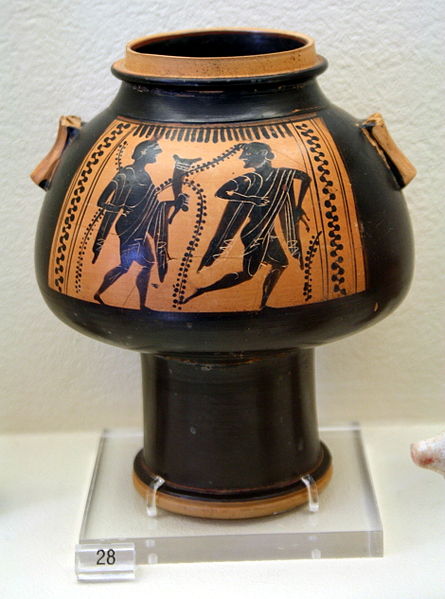An oenochoe, also spelled oinochoe, is a wine jug and a key form of ancient Greek pottery.
Terracotta trefoil oenochoe, Wild Goat style, c. 625 BC – 600 BC, in the Louvre. Below: bronze trefoil-mouthed oenochoe with Dionysus head on handle attachment, 330–320 BC, part of the Vassil Bojkov collection, Sofia, Bulgaria.
Image: Oinochoe 103.1
Oinochoe Shape 1, H. 22 cm (8 ½ inches), diam. 13.5 cm (5 ¼ in.), Eos (Dawn) pursuing Tithonus. Attic red-figure, 470–460 BC.
Oinochoe Shape 2, H. 23.5 cm (9 ¼ in.), diam. 14.3 cm (5 ½ in.), Attic, 4th century
Pottery of ancient Greece
Pottery, due to its relative durability, comprises a large part of the archaeological record of ancient Greece, and since there is so much of it, it has exerted a disproportionately large influence on our understanding of Greek society. The shards of pots discarded or buried in the 1st millennium BC are still the best guide available to understand the customary life and mind of the ancient Greeks. There were several vessels produced locally for everyday and kitchen use, yet finer pottery from regions such as Attica was imported by other civilizations throughout the Mediterranean, such as the Etruscans in Italy. There were a multitude of specific regional varieties, such as the South Italian ancient Greek pottery.
Pottery of ancient Greece
Hellenistic Amphorae, stacked the way they were probably transported in antiquity, display in the Bodrum Museum of Underwater Archaeology
Disjecta membra (a fragment of ancient Greek pottery)
Neoclassical "Black Basalt" Ware vase by Wedgwood, c. 1815 AD








